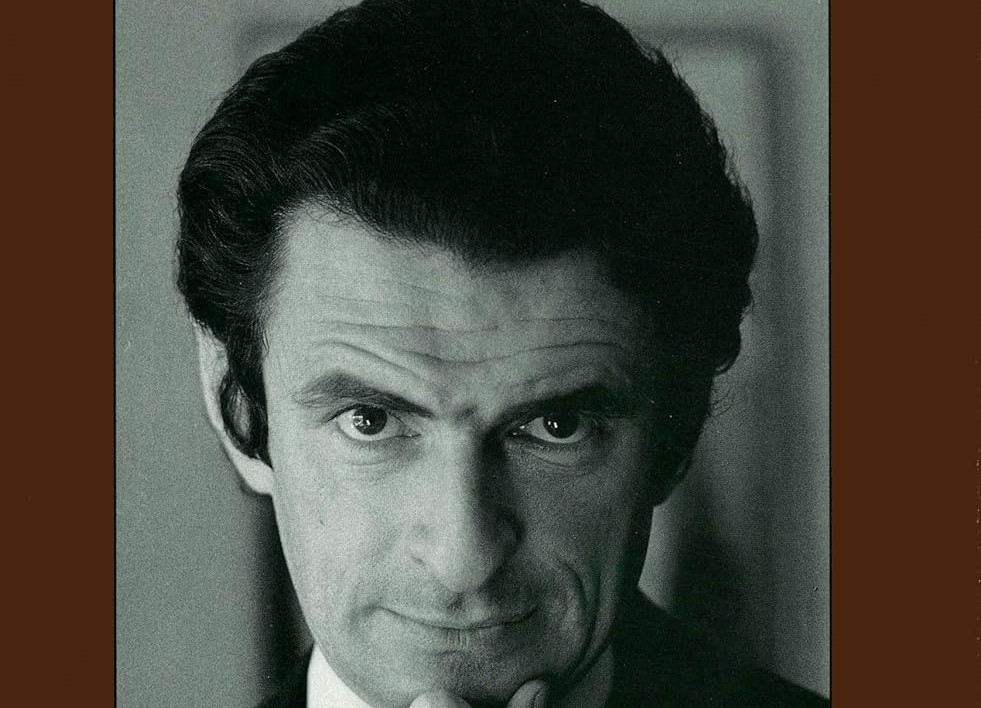A genius novelist or a fame-seeking fraudster: who is Jerzy Kosinski?
In the last years of his life, Kosinski, who had various rumors about the novels he wrote and was stuck in heart failure and mental collapse, was fifty-eight years old when he committed suicide with a plastic bag over his head in the bathtub.

On June 14, 1933, a Jewish family living in Lodz, Poland, had a son. His name is Josef Lewinkopf. When Josef was a little boy, his father Moses heard the footsteps of the Nazi empire, changed the family's surname to Kosinski, and moved further east. The family has now become Christians. Josef Lewinkopf was baptized in a church under the name Jerzy Kosinski. During the German occupation, the family hid as Catholics. After the war ended, Father Kosinski joined the communist ranks.
Jerzy Kosinski received a master's degree in history and sociology from the University of Lodz and worked for a time as an associate professor at the Polish Academy of Sciences. While studying at the University of Lodz, he met the famous film director Roman Polanski, with whom he would later become a close friend in America.
Jerzy Kosiński (June 14, 1933 – May 3, 1991) was a Polish-Jewish and later Polish-American novelist and two-time president of the American Chapter of P.E.N., who wrote primarily in English. Born in Poland, he survived World War II and, as a young man, emigrated to the U.S., where he became a citizen.
Young Kosinski, who hated communism unlike his father, sought asylum in the USA in 1957 with the fake documents he prepared. He will now continue his life in the New World. Kosinski, who landed in America at the age of twenty-four, worked at every job he could and continued his education. After graduating from Columbia University, Kosinski devoted himself entirely to writing, while also teaching "creative writing" courses at distinguished universities such as Yale and Princeton.
In those years, his anti-communist books The Future Is Ours, Comrade, and No Third Party were published under the pseudonym Joseph Novak.
At the age of twenty-nine, he married Mary Hayward Weir, an alcoholic heiress of a steel empire. Now, as a writer who owns private planes and yachts, he organizes parties for the rich and intellectuals of the time in their homes in New York and tells the childhood memories he imagines.
Kosinski made his second marriage in 1962, with Katherine von Fraunhofer, who came from the aristocracy of the German state of Bavaria. In the last years of his life, Kosinski, who had various rumors about the novels he wrote and was stuck in heart failure and mental collapse, was fifty-eight years old when he committed suicide with a plastic bag over his head in the bathtub.
Before he died, he wrote on a piece of paper: “I will sleep longer than usual. “Call it eternity,” he wrote.
“What I write is for those who are ready to accept a new relationship between writer and reader.”
Kosinski's novel The Painted Bird was published in 1967. The hero of the novel is a six-year-old Jewish boy. His family sends him to a remote village to save him from the Nazis occupying Poland. After the old woman in whose house he took shelter dies, the child will have to fend for himself, and in the meantime, he will be constantly rejected and ostracized by his environment.
The Painted Bird tells the brutality of war through the eyes of this little boy. Although Kosinski claimed that this book had autobiographical features throughout his life, his biographer, James Park Sloan, emphasizes that the author actually spent World War II with his family in a constantly fearful but protected environment, hiding the fact that he was Jewish from his surroundings.
Another famous work by Kosinski was published in 1975 under the name Cockpit. The author will turn another adventure he went through into the story of the hero he created in this novel. Indeed, Kosinski would have died in 1969, before many of his famous works could be published, had he not been late for the invitation because of lost luggage at the airport on the night when movie star Sharon Tate, the wife of his close friend Roman Polanski, and their guests were murdered by Charles Mason's "Helter Skelter" gang. Maybe if Kosinski had been there, he would have refused to be a victim of the gang and fought with his warrior and predatory personality, and the events would have ended differently. Who knows?
Kosinski's book Being There, published in 1971, is a satirical novel that mocks the superficiality of American media culture. An uneducated gardener, who has spent his entire life in a closed environment, comes face to face with the outside world he has never known before, when the wealthy reclusive landlord he works for dies. He instantly becomes famous with his coincidences and his naive but confident and mysterious attitude. Being There was later adapted for the big screen under the name "The Gardener", starring Peter Sellers and Shirley Maclaine.
Kosinski is a writer who has lived an adventurous life of ups and downs with seemingly reckless audacity. However, the deep scars left on his soul by the traumas he experienced were inevitably reflected in the content and style of all his shocking novels. He does not and cannot look at life like ordinary people. They have sharp preferences and different value judgments. This intense energy overflows between the lines and reaches directly to the reader's soul. At least that's how I always felt while reading his books.
The books of Kosinski, who is also the author of the novels Steps (1969), The Devil Tree (1973), and Passion Play (1979), were on The New York Times bestseller list and were translated into more than 30 languages.
Don't those crazy looks in his photographs adorning his books, whose sales reached 70 million in 1991, tell it all?
